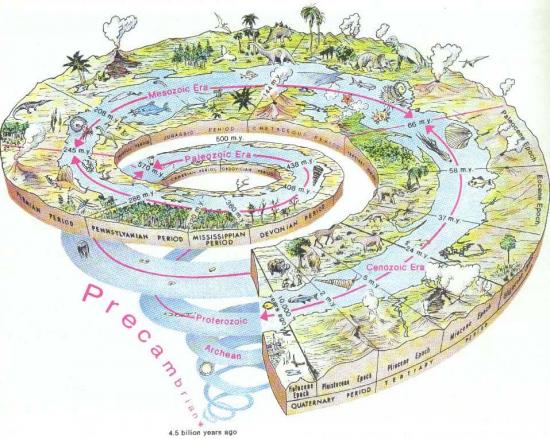2011年8月美国《国家科学院院刊》(PNAS)刊登了中国科学院动物研究所李枢强领导的团队的研究结果“Eocene habitat shift from saline to freshwater promoted Tethyan amphipod diversification”)。这一研究验证了生态机遇(Ecological opportunity)促进物种分化的假说。该研究以在北半球淡水和咸水中分布的115种钩虾为研究对象,通过基因序列构建系统树,首次提出淡水钩虾起源于古地中海,并在4300万年前(始新世)由咸水迁移到淡水。原来在咸水中生活的钩虾物种分化缓慢,进入淡水环境后进化速度却经历了早期的快速分化和近期的两次变缓。生物地理学研究证实钩虾的迁移是由古地质与古气候变化引起的。欧亚板块与印度板块的碰撞导致青藏高原的隆起,切断了古地中海与太平洋、印度洋的联系;同时欧亚板块与非洲板块的碰撞导致欧洲西部陆地面积的增大。随着古地中海的萎缩和欧亚陆地面积的增加,北半球淡水的表面积相应增加,为钩虾迁移至淡水提供了前所未有的生态机遇。其中土尔盖海峡(Turgai)的干涸,更是加快了物种分化进程。但从1400万年前起,随着淡水钩虾物种的增加,物种形成速度减慢。
淡水中生活着至少10万种生物,但淡水只占地球上水总量的0.01%;海洋里生活着21万种生物,但海水占地球上水总量的97.3%。科学界对淡水和海洋中物种数量的不均衡现象长期感到困惑。在国家自然科学基金面上项目和国家杰出青年科学基金的资助下,中国科学院动物研究所启动了相关研究计划,并获得了一些重要研究进展。此次发表的学术论文解释了生物从咸水迁移到淡水引起物种分化的历史。

PNAS:生物从咸水迁移到淡水引起物种分化
生物探索推荐英文论文摘要:
Eocene habitat shift from saline to freshwater promoted Tethyan amphipod diversification
Current theory predicts that a shift to a new habitat would increase the rate of diversification, while as lineages evolveinto multiple species, intensified competition would decrease the rate of diversification. We used Holarctic amphipods ofthe genus Gammarus to test this hypothesis. We sequenced four genes (5,088 bp) for 289 samples representing 115 Gammarus species. A phylogenetic analysis showed that Gammarus originated from the Tethyan region with a saline ancestry in the Paleocene, and later colonized the freshwater habitat inthe Middle Eocene. Ancestral range reconstruction and diversification mode analysis combined with paleogeological and paleoclimaticevidence suggested that the habitat shift from saline to freshwater led to an increased diversification rate. The saline lineageof Gammarus dispersed to both sides of the Atlantic at 55 million years ago (Ma), because of the few barriers between the Tethys andthe Atlantic, and diversified throughout its evolutionary history with a constant diversification rate [0.04 species per millionyears (sp/My)]. The freshwater Gammarus, however, underwent a rapid diversification phase (0.11 sp/My) until the Middle Miocene, and lineages successively diversifiedacross Eurasia via vicariance process likely driven by changes of the Tethys and landmass. In particular, the freshwater Gammarus lacustris and Gammarus balcanicus lineages had a relatively high diversification shift, corresponding to the regression of the Paratethys Sea and the continentalizationof Eurasian lands during the Miocene period. Subsequently (14 Ma), the diversification rate of the freshwater Gammarus decreased to 0.05 and again to 0.01 sp/My. The genus Gammarus provides an excellent aquatic case supporting the hypothesis that ecological opportunities promote diversification.







